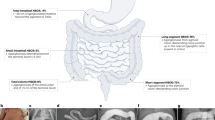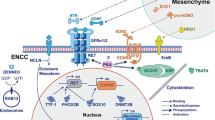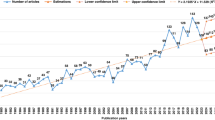Abstract
Hirschsprung disease (HSCR), or congenital intestinal aganglionosis, is a relatively common disorder characterized by the absence of ganglion cells in the nerve plexuses of the lower digestive tract, resulting in intestinal obstruction in neonates. Mutations in genes of the RET receptor tyrosine kinase and endothelin receptor B (EDNRB) signaling pathways have been shown to be associated in HSCR patients. In this study, we collected genomic DNA samples from 55 HSCR patients in central Taiwan and analyzed the coding regions of the RET and EDNRB genes by PCR amplification and DNA sequencing. In the 55 patients, an A to G transition was detected in two (identical twin brothers). The mutation was at the end of RET exon 19 at codon 1062 (Y1062C), a reported critical site for the signaling pathways. Single nucleotide polymorphisms (SNP) in exons 2, 7, 11, 13, and 15 of RET and exon 4 of EDNRB in the HSCR patients or controls were detected. The differences between patients and controls in allele distribution of the five RET polymorphic sites were statistically significant. The most frequent genotype encompassing exons 2 and 13 SNPs (the polymorphic sites with the highest percentage of heterozygotes) was AA/GG in patients, which was different from the AG/GT in the normal controls. Transmission disequilibrium was observed in exons 2, 7, and 13, indicating nonrandom association of the susceptibility alleles with the disease in the patients. This study represents the first comprehensive genetic analysis of HSCR disease in Taiwan.
Similar content being viewed by others
Log in or create a free account to read this content
Gain free access to this article, as well as selected content from this journal and more on nature.com
or
References
Angrist M, Kauffman E, Slaugenhaupt SA, Matise TC, Puffenberger EG, Washington SS, Lipson A, Cass DT, Reyna T, Weeks DE (1993) A gene for Hirschsprung disease (megacolon) in the pericentromeric region of human chromosome. Nat Genet 4:351–356
Angrist M, Bolk S, Thiel B, Puffenberger EG, Hofstra RM, Buys CH, Cass DT, Chakravarti A (1995) Mutation analysis of the RET receptor tyrosine kinase in Hirschsprung disease. Hum Mol Genet 4:821–830
Angrist M, Bolk S, Halushka M, Lapchak PA, Chakravarti A (1996) Germline mutations in glial cell line-derived neurotrophic factor (GDNF) and RET in a Hirschsprung disease patient. Nat Genet 14:341–344
Attie T, Pelet A, Edery P, Eng C, Mulligan LM, Amiel J, Boutrand L, Beldjord C, Nihoul-Fekete C, Munnich A (1995) Diversity of RET proto-oncogene mutations in familial and sporadic Hirschsprung disease. Hum Mol Genet 4:1381–1386
Badner JA, Sieber WK, Garver KL, Chakravarti A (1990) Specific polymorphisms in the RET proto-oncogene are over-represented in patients with Hirschsprung disease and may represent loci modifying phenotypic expression. Am J Hum Genet 46:568–580
Borrego S, Saez ME, Ruiz A, Gimm O, Lopez-Alonso M, Antinolo G, Eng C (1999) Specific polymorphisms in the RET proto-oncogene are over-represented in patients with Hirschsprung disease and may represent loci modifying phenotypic expression. J Med Genet 36: 771–774
Borrego S, Ruiz A, Saez ME, Gimm O, Gao X, Lopez-Alonso M, Hernandez A, Wright FA, Antinolo G, Eng C (2000) RET genotypes comprising specific haplotypes of polymorphic variants predispose to isolated Hirschsprung disease. J Med Genet 37:572–578
Borrego S, Wright FA, Fernandez RM, Williams N, Lopez-Alonso M, Davuluri R, Antinolo G, Eng C (2003) A founding locus within the RET proto-oncogene may account for a large proportion of apparently sporadic Hirschsprung disease and a subset of cases of sporadic medullary thyroid carcinoma. Am J Hum Genet 72:88–100
Burzynski GM, Nolte IM, Osinga J, Ceccherini I, Twigt B, Maas S, Brooks A, Verheij J, Plaza Menacho I, Buys CH, Hofstra RM (2004) Localizing a putative mutation as the major contributor to the development of sporadic Hirschsprung disease to the RET genomic sequence between the promoter region and exon 2. Eur J Hum Genet 12: 604–612
Chattopadhyay P, Pakstis AJ, Mukherjee N, Iyengar S, Odunsi A, Okonofua F, Bonne-Tamir B, Speed W, Kidd JR, Kidd KK(2003) Global survey of haplotype frequencies and linkage disequilibrium at the RET locus. Eur J Hum Genet 11(10):760–769
Doray B, Salomon R, Amiel J, Pelet A, Touraine R, Billaud M, Attie T, Bachy B, Munnich A, Lyonnet S (1998) Mutation of the RET ligand, neurturin, supports multigenic inheritance in Hirschsprung disease. Hum Mol Genet 7:1449–1452
Edery P, Lyonnet S, Mulligan LM, Pelet A, Dow E, Abel L, Holder S, Nihoul-Fekete C, Ponder BA, Munnich, A (1994) Mutations of the RET proto-oncogene in Hirschsprung’s disease. Nature 367:378–380
Fitze G, Schreiber M, Kuhlisch E, Schackert HK, Roesner D (1999) Association of RET protooncogene codon 45 polymorphism with Hirschsprung disease. Am J Hum Genet 65: 1469–1473
Fitze G, Cramer J, Ziegler A, Schierz M, Schreiber M, Kuhlisch E, Roesner D, Schackert HK (2002) Association between c135G/A genotype and RET proto-oncogene germline mutations and phenotype of Hirschsprung’s disease. Lancet 359:1200–1205
Fitze G, Appelt H, Konig IR, Gorgens H, Stein U, Walther W, Gossen M, Schreiber M, Ziegler A, Roesner D, Schackert HK (2003) Functional haplotypes of the RET proto-oncogene promoter are associated with Hirschsprung disease (HSCR). Hum Mol Genet 12:3207–3214
Frost G (1992) Hirschsprung disease in infants and children. Gastroenterol Nurs 15:45–48
Gabriel SB, Salomon R, Pelet A, Angrist M, Amiel J, Fornage M, Attie-Bitach T, Olson, JM, Hofstra R, Buys C, Steffann J, Munnich A, Lyonnet S, Chakravarti A (2002) Segregation at three loci explains familial and population risk in Hirschsprung disease. Nat Genet 31:89–93
Garcia-Barcelo MM, Sham MH, Lui VC, Chen BL, Song YQ, Lee WS, Yung SK, Romeo G, Tam PK (2003) Chinese patients with sporadic Hirschsprung’s disease are predominantly represented by a single RET haplotype. J Med Genet 40:e122
Garcia-Barcelo M, Sham MH, Lee WS, Lui VC, Chen BL, Wong KK, Wong JS, Tam PK (2004) Highly recurrent RET mutations and novel mutations in genes of the receptor tyrosine kinase and endothelin receptor B pathways in Chinese patients with sporadic Hirschsprung disease. Clin Chem 50:93–100
Gath R, Goessling A, Keller KM, Koletzko S, Coerdt W, Muntefering H, Wirth S, Hofstra RM, Mulligan L, Eng C, von Deimling A (2001) Analysis of the RET, GDNF, EDN3, and EDNRB genes in patients with intestinal neuronal dysplasia and Hirschsprung disease. Gut 48:671–675
Geneste O, Bidaud C, De Vita G, Hofstra RM, Tartare-Deckert S, Buys CH, Lenoir GM, Santoro M, Billaud, M (1999) Two distinct mutations of the RET receptor causing Hirschsprung’s disease impair the binding of signalling effectors to a multifunctional docking site. Hum Mol Genet 8: 1989–1999
Hofstra RM, Osinga J, Tan-Sindhunata G, Wu Y, Kamsteeg EJ, Stulp RP, van Ravenswaaij-Arts C, Majoor-Krakauer D, Angrist M, Chakravarti A, Meijers C, Buys CH (1996) A homozygous mutation in the endothelin-3 gene associated with a combined Waardenburg type 2 and Hirschsprung phenotype (Shah-Waardenburg syndrome). Nat Genet 12:445–447
Hofstra RM, Valdenaire O, Arch E, Osinga J, Kroes H, Loffler BM, Hamosh A, Meijers C, Buys CH (1999) A loss-of-function mutation in the endothelin-converting enzyme 1 (ECE-1) associated with Hirschsprung disease, cardiac defects, and autonomic dysfunction. Am J Hum Genet 64:304–308
Kusafuka T, Puri P (1998) Genetic aspects of Hirschsprung’s disease. Semin Pediatr Surg 7:148–155
Lesser PB, El-Nahas AM, Lukl P, Andrews P, Schuler JG, Filtzer HS (1979) Adult-onset Hirschsprung’s disease. Jama 242:747–748
Lorenzo MJ, Gish GD, Houghton C, Stonehouse TJ, Pawson T, Ponder BA, Smith DP (1997) RET alternate splicing influences the interaction of activated RET with the SH2 and PTB domains of Shc, and the SH2 domain of Grb2.Oncogene 14:763–771
Lyonnet S, Bolino A, Pelet A, Abel L, Nihoul-Fekete C, Briard M., Mok-Siu V, Kaariainen H, Martucciello G, Lerone M (1993) A gene for Hirschsprung disease maps to the proximal long arm of chromosome 10. Nat Genet 4:346–350
Pingault V, Bondurand N, Kuhlbrodt K, Goerich DE, Prehu MO, Puliti A, Herbarth B, Hermans-Borgmeyer I, Legius E, Matthijs G, Amiel J, Lyonnet S, Ceccherini I, Romeo G, Smith JC, Read AP, Wegner M, Goossens M (1998) SOX10 mutations in patients with Waardenburg-Hirschsprung disease. Nat Genet 18:171–173
Puffenberger EG, Hosoda K, Washington SS, Nakao K, deWit D, Yanagisawa M, Chakravart A (1994) A missense mutation of the endothelin-B receptor gene in multigenic Hirschsprung’s disease. Cell 79:1257–1266
Reyna TM (1993) Hirschsprung’s disease. J Pediatr Surg 28:1522–1523
Romeo G, Ronchetto P, Luo Y, Barone V, Seri M, Ceccherini I, Pasini B, Bocciardi R, Lerone M, Kaariainen H (1994) Point mutations affecting the tyrosine kinase domain of the RET proto-oncogene in Hirschsprung’s disease. Nature 367:377–378
Sakai T, Nirasawa Y, Itoh Y, Wakizaka A (2000) Japanese patients with sporadic Hirschsprung: mutation analysis of the receptor tyrosine kinase proto-oncogene, endothelin-B receptor, endothelin-3, glial cell line-derived neurotrophic factor and neurturin genes: a comparison with similar studies. Eur J Pediatr 159:160–167
Seri M, Yin L, Barone V, Bolino A, Celli I, Bocciardi R, Pasini B, Ceccherini I, Lerone M, Kristoffersson U, Larsson LT, Casasa JM, Cass DT, Abramowicz MJ, Vanderwinden JM, Kravcenkiene I, Baric I, Silengo M, Martucciello G, Romeo G (1997) Frequency of RET mutations in long- and short-segment Hirschsprung disease.Hum Mutat 9:243–9
Svensson PJ, Molander ML, Eng C, Anvret M, Nordenskjold A (1998) Low frequency of RET mutations in Hirschsprung disease in Sweden. Clin Genet 54:39–44
Takahashi M, Buma Y, Iwamoto T, Inaguma Y, Ikeda H, Hiai H (1988) Cloning and expression of the ret proto-oncogene encoding a tyrosine kinase with two potential transmembrane domains.Oncogene 3:571–578
Wakamatsu N, Yamada Y, Yamada K, Ono T, Nomura N, Taniguchi H, Kitoh H, Mutoh N, Yamanaka T, Mushiake K, Kato K, Sonta S, Nagaya M (2001) Mutations in SIP1, encoding Smad interacting protein-1, cause a form of Hirschsprung disease. Nat Genet 27:369–370
Acknowledgements
This study was supported in part by National Science Council (NSC 89-2314-B040-036, 89-2745-P040-002, 90-2745-P040-002) and Chung Shan Medical University (CSMC 89-OM-A038). We thank the patients and their parents involved in this study.
Author information
Authors and Affiliations
Corresponding author
Rights and permissions
About this article
Cite this article
Wu, TT., Tsai, TW., Chu, CT. et al. Low RET mutation frequency and polymorphism analysis of the RET and EDNRB genes in patients with Hirschsprung disease in Taiwan. J Hum Genet 50, 168–174 (2005). https://doi.org/10.1007/s10038-005-0236-x
Received:
Accepted:
Published:
Issue date:
DOI: https://doi.org/10.1007/s10038-005-0236-x
Keywords
This article is cited by
-
Downregulation of PRMT1 promotes the senescence and migration of a non-MYCN amplified neuroblastoma SK-N-SH cells
Scientific Reports (2019)
-
RET and EDNRB mutation screening in patients with Hirschsprung disease: Functional studies and its implications for genetic counseling
European Journal of Human Genetics (2016)
-
Correlation between multiple RET mutations and severity of Hirschsprung’s disease
Pediatric Surgery International (2013)
-
Association of genetic polymorphisms in the RET-protooncogene and NRG1 with Hirschsprung disease in Thai patients
Journal of Human Genetics (2012)
-
Comprehensive analysis of RET common and rare variants in a series of Spanish Hirschsprung patients confirms a synergistic effect of both kinds of events
BMC Medical Genetics (2011)



